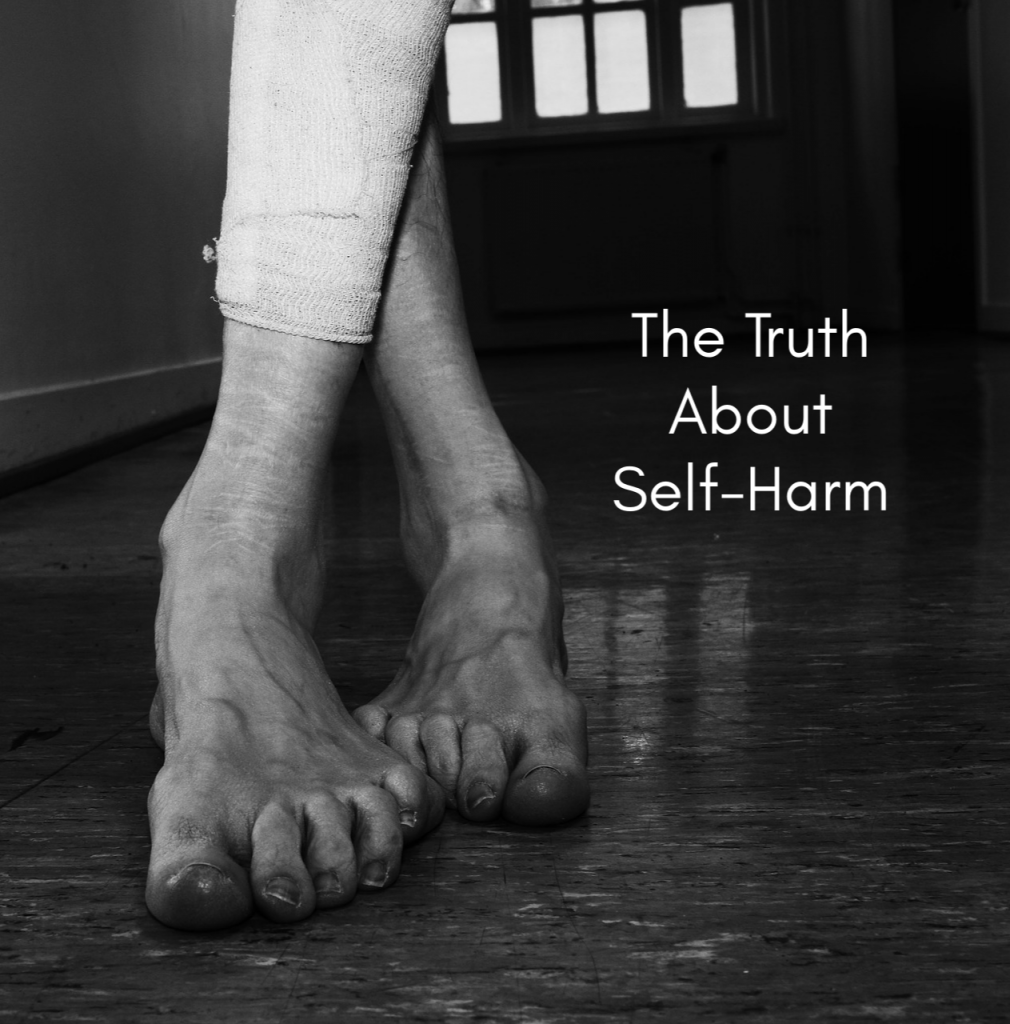
***Warning: This article may trigger those who self-harm.***
This topic is very difficult for me to write about because of how closely it hits home. I have been a self-harmer far into my adult years. It’s something I still struggle with sometimes. When most people hear the term ‘self-harm’ they think of a young teenager cutting themselves, but the truth is that self-harm can be practiced at any age and can involve other ways of hurting oneself. It usually starts in the teen years, but teenagers grow up and if they haven’t had the proper care at a younger age the behavior can become a habit – ingrained so to speak. It can become an addiction.
Self-harm is anything a person does to deliberately hurt themselves as a coping mechanism. Self-injury should not be confused with suicidal thoughts or ideations. That is not the point of self-harm. It is more of an expression of pain – not a death wish. Most of the time it is a response to stress. There are many reasons why a person may hurt themselves.
-
-
- Turn thoughts or feelings you can’t explain into something more tangible
- Take an emotional pain and make it physical
- A means of escape from memories
- A release of overpowering emotions or thoughts
- To stop feeling numb or disconnected
- To gain a sense of control
- A way of self-punishment
-
My personal reasons for self-harm have always been to either make an emotional pain more physical so that I could feel like I’m taking care of it or to simply remind myself that I can feel at all. There was one particular time that I was so emotionally and physically numb that when I burned myself with a cigarette, I barely felt it. Sadly, it’s my deepest scar from self-injury. I’m reminded each time I look at it just how deep my depression can take me. Another practice of mine was cutting the bottoms of my feet so that I could feel the sting every time I took a step as a reminder that I could still feel.
Self-harm can happen in many different ways. Some may surprise you. Cutting is the most common, but there are many other types of self-injury.
-
-
- Burning
- Hitting – pounding your head against the wall or hitting yourself with other objects
- Biting
- Poisoning
- Picking at your skin or at scabs incessantly
- Sticking objects into your skin
- Hairpulling (Trichotillomania)
- Scratching
- Over exercising
- Multiple tattoos or piercings (if you are doing it just to feel the pain)
-
Another misconception of self-injury along with it only being a practice of teenagers is that it is a form of attention seeking. There are those who use it for that, but someone who is truly a self-harmer will usually hide the evidence or lie about it. It becomes our dirty little secret. No one knew the extent of my self-inflicted wounds because I would always cut in places no-one could readily see – my hips, thighs or, like I mentioned earlier, the bottoms of my feet. Even though it gives a sense of release or comfort, it is only a temporary fix. Shame and guilt of what we’ve done will overtake us and a vicious cycle takes over – stress, emotional suffering, emotional overload, self-harm, relief, guilt/shame, and back to stress. This is why treatment is so important.
There is usually always an underlying mental illness associated with self-injury – depression, bi-polar disorder, borderline personality disorder, PTSD or anxiety to name a few. Getting treatment for these disorders is a big start in coping with self-harm. Psychiatrists and therapists can offer different strategies to help with the urges to self-injure. These can include meditation or breathing strategies, listening to music, writing in a journal, crafting, or taking a walk.
As I said earlier, I still deal with urges to self-harm from time to time. During times of high stress, I tend to, without consciously thinking about it, pick at my skin until it bleeds and then pick at the scabs to the point that they won’t heal. It can be very disheartening when I realize what I’m doing and takes a lot of focus to keep from doing it more.
I think self-harm is one of the most misunderstood parts of mental illness. It can be glamorized in a way in music and among the teenage crowd, but it is a serious issue that should be dealt with as such. Self-injury is not fun and can have unintended consequences such as death and mutilation. If you self-harm or suspect that someone you know does, please seek help! Reach out to someone you trust and talk about it, then see a health care professional and get help before it becomes an addiction.

You are so brave and strong…. this blog is a testament to your strength.
I’m constantly awed and amazed by you my sweet sweet Sister.💗